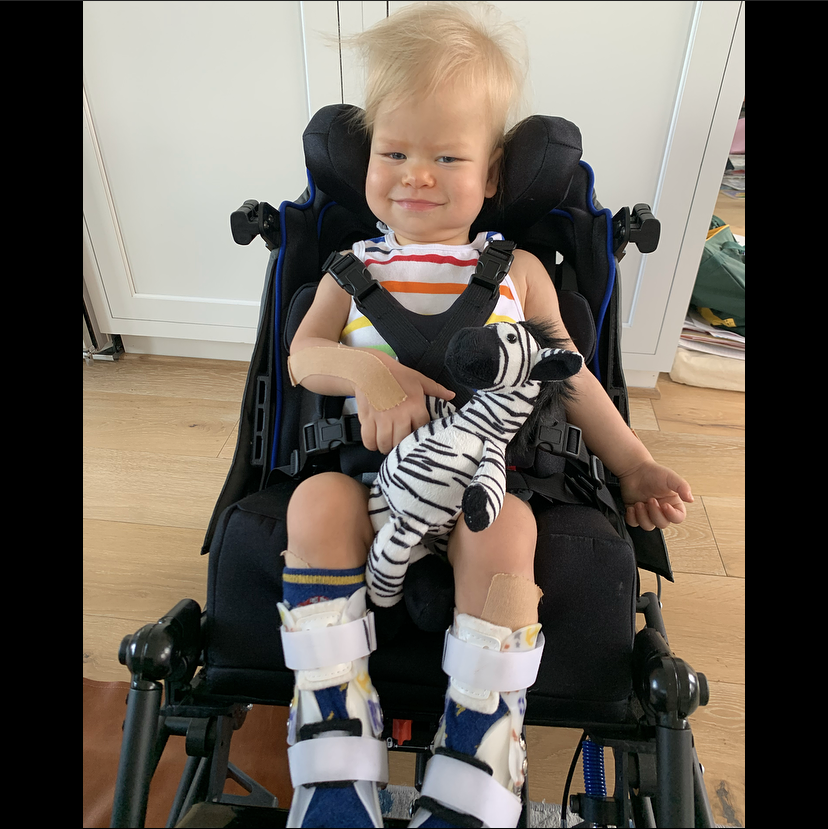The story of Hannah
I never take for granted that my 17 month old son, Austin, is awake in the morning. In fact, I’m always a little bit surprised. There’s a moment of holding my breath as I walk into his room, come over to his crib in the dark, sing “Good morning, Cookie!” and rub his head. It’s warm. Phew. He stretches and smiles and I kiss him all over his face. We were told we probably shouldn’t get all up in his face to protect him from germs, but how can I not when he’s so precious, so cute?!
Then we do his machines and range of motion exercises. See, Austin has a life-limiting, muscle-wasting disease called LMNA-related congenital muscular dystrophy. It’s severe. Kids typically live fewer than 18 years before they succumb to respiratory insufficiency or heart issues. So each morning and evening, we use a cough assist machine with Austin to keep his lungs healthy. It forcibly pushes air into his lungs and then sucks it back out – dementor-style. This is to stretch his lungs and chest wall, as well as break up any secretions, which we then suction out with a vacuum-like hose. This routine will help keep his lungs and chest from tightening and becoming more susceptible to infection.
We work his arms, legs, hands and feet to keep up his range of motion as contractures will start to develop, along with scoliosis.
Our days are long: filled with therapies, ankle and wrist braces going on and coming off again when they get too heavy for him to move with them on, G-tube feedings (sometimes followed by vomiting), various contraptions from chairs to standers, neck braces and medicines pulled through syringes.
This disease greatly affects his strength. He has no head control, a weak torso, arms and legs, so he cannot stand, walk or even sit up or eat by mouth. We are currently discussing which power wheelchair will best suit him for his 2nd birthday.
Despite his limitations, however, Austin is quite happy. He loves music, “dancing.” and bouncing in his baby bouncing chair (now much to small). He can’t lift heavy toys or big books, but he likes to stack light blocks and play with any toy that makes a noise with buttons. So in these ways, he is cognitively quite typical for a child his age.
We, as his parents, will of course do everything to ensure he has the richest, longest life possible. To that end, we have started the L-CMD Research Foundation to urgently translate science into a treatment and ultimately a cure for L-CMD in the shortest time possible.
L-CMD affects approximately 200 kids worldwide, however there is a range of mutations (i.e. point mutations, deletions of DNA, etc.) and a spectrum to the pace of progressive deterioration.
Given that Austin is on the severe end of the spectrum, we cannot wait for the science to reach us; we must go seeking the innovative, most promising scientific technologies. Since his diagnosis in February 2020, we’ve been knocking on doors (virtually), talking with scientists and doctors, biotech firms and academic labs. We’ve collectively read nearly 1,000 scientific papers and articles. We’re finding the work that needs to be done and urgently raising money to fund that work. www.lcmdresearch.org
